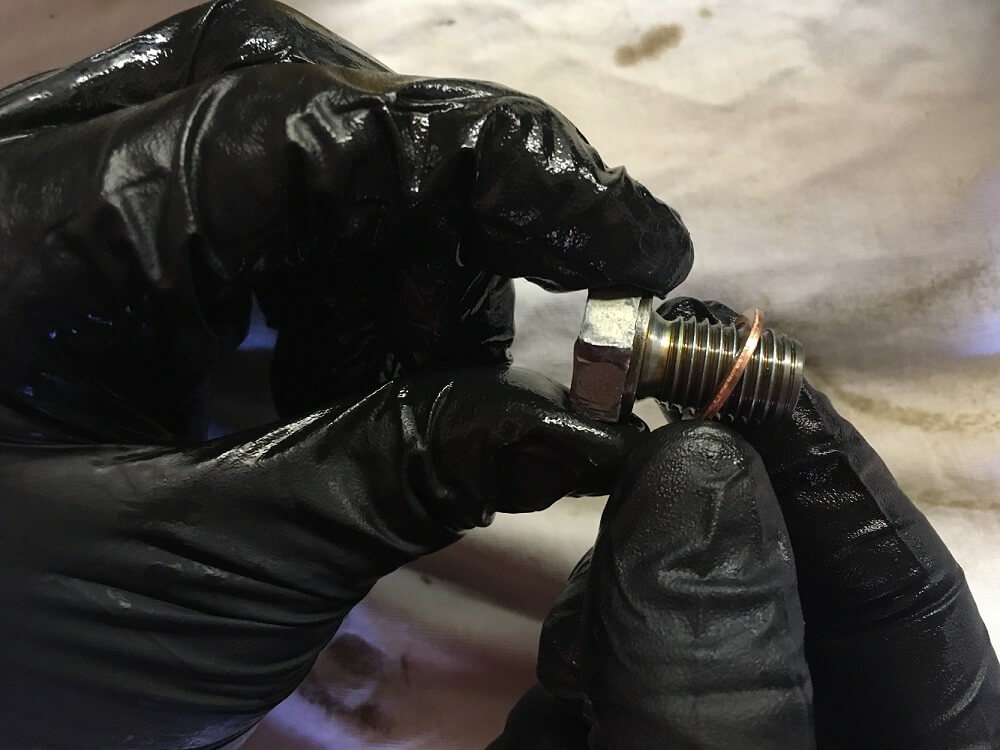Changing your car’s oil is an important part of proper car maintenance. Consistent oil changes help to keep a car’s engine cleaner and help it to last longer. Although to some it may seem like a daunting task, we laid out how to change your oil in seven easy steps for you!
Tools Needed:
- Floor jack & jack stands or ramps (vehicles with large clearance may not need these)
- Wrench & Socket to remove drain plug
- Oil filter wrench
- Drain pan
- Funnel
- MODEL NUMBERS MAY VARY: XL3000A = A20002
- QUICK LIFT: Double pump pistons raise saddle to the load fast.
- BYPASS AND OVERLOAD VALVES: Prevents over-extension of hydraulic ram and jack use beyond rated capacity.
- Lightweight jack stands are used to support your vehicle after lifting with a jack; Wide pyramid foot base provides added strength and stable support
- Constructed of high-grade forged steel with a welded frame design for durability, it handles a wide range of vehicles including small cars, SUVs, and light duty trucks
- Adjustable height ranges from 10-13/16" to 16-9/16" with a 2 ton (4,000 lb) load capacity
- Product Type : Auto Accessory
- Package Quantity : 1
- Package Weight : 2.4 Lbs
- All Purpose Value Pack of Funnels - Red, Blue, White
- Blue Funnel Dimensions: Length: 7.63", Input: 8.66", Output: 0.71"
- Red Funnel Dimensions: Length: 5.19", Input: 6.49", Output: 0.67"
Parts Needed:
- New Oil (check your owner’s manual for the quantity and type of oil needed)
- New Oil Filter
- New washer for drain plug (these will usually come in a kit with the new oil filter)
1. Raise the Car
Raise the front of your car (if your car has the engine in the front) using the floor jack or drive the car on the ramps. If using a floor jack, make sure to use jack stands for added safety. Most cars have two jacking points on each side, between the two wheels. Be sure to use a jacking point when raising your car.

2. Locate Drain Plug
Most drain plugs will be either on the bottom of the engine facing towards the floor or on the side of the engine facing out. For some cars, you may need to remove any plastic undertrays as these may block access to the drain plug.
3. Drain the Oil
Once you have located the drain plug, place the drain pan underneath the drain plug (if the drain plug is on the side of the engine, the oil won’t pour out directly underneath the drain plug). Now use your wrench to remove the drain plug. It helps to get it almost completely loose, and then use your fingers to finish removing the drain plug. Note that the oil will come out fast, so be prepared.
Helpful Hint: Run your engine for 2-3 minutes before draining the oil, this will help the oil drain faster.
4. Replace the Oil Filter
Once the oil draining has slowed significantly, locate the oil filter. Some cars’ oil filters are located underneath the car, while others may be accessible from the engine bay. Use the oil filter wrench to loosen and remove the oil filter. Drain any excess oil inside the filter into the drain pan. Now grab your new oil filter and install it using the oil filter wrench. Be careful not to overtighten the new filter (use the old oil filter’s “tightness” as a reference).
5. Reinstall Drain Plug
Make sure that your oil is no longer draining or just barely draining. Now locate your new drain plug washer and replace your old washer with it. Now reinstall the drain plug using your wrench.
6. Fill your car up with New Oil
Now you are ready to fill your car up with the new oil. They oil filler should be located on top of your engine and accessible from the engine bay. Take the cap off the oil filler, and insert your funnel. Pour the new oil into the oil filler. Do not fill to your car’s maximum capacity, fill it about 90% of your car’s oil capacity, then reinstall the oil filler cap.
7. Check Oil Level
Start your car and let it run for 2-3 minutes (if any oil warning lights stay on, turn the car off immediately). Now make sure your car is on a level surface and after a few minutes of the engine off, check your oil level using the dipstick. As a general rule of thumb, the quantity of oil needed to fill your car from the “minimum” mark of a dipstick to the “maximum” mark is about 1 quart of oil. Use this rule as a reference and fill your car with any additional oil needed. Cars do not need to have the maximum amount of oil, and generally it is safer to have just between the minimum and maximum marks on the dipstick.

Now that you have successfully changed your oil, make sure to properly dispose of your old oil. Most auto parts stores will be able to “dump” your old oil for you if you take them your drain pan.
Doing your own oil changes can save you time and money. It is a simple job that can be done at home and saves you from overpaying at the dealer.





